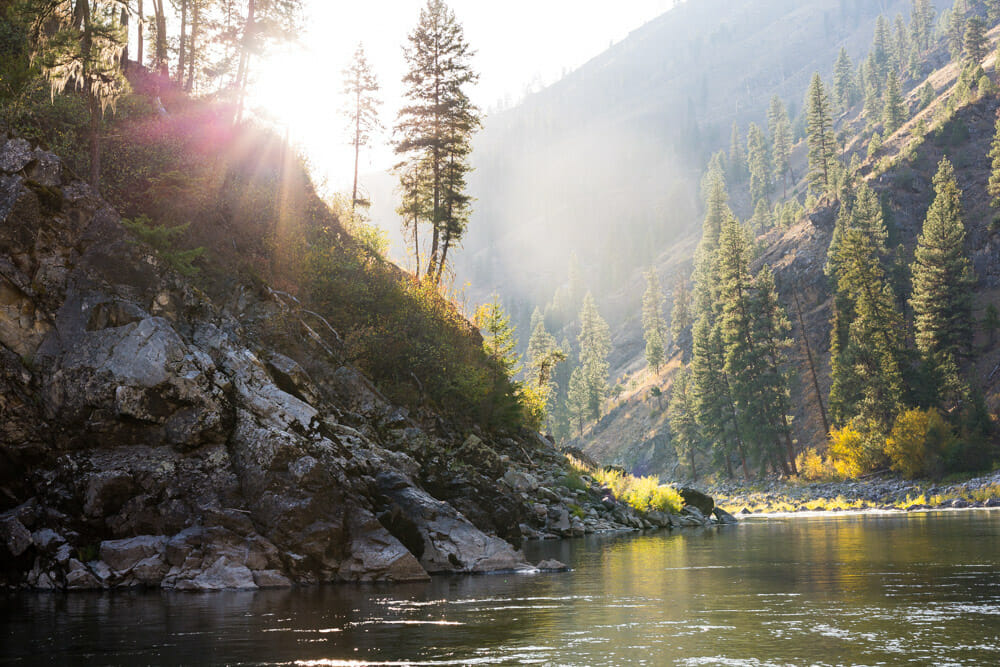
After decades of lawsuits, recovering Snake River salmon and steelhead is inching closer to reality.
This week a series of meetings kick off in Washington to gather public input on the impacts of dam removal on the Lower Snake.
In preparation, Rob Masonis, vice president for Western Conservation at Trout Unlimited, and Helen Neville, senior scientist at Trout Unlimited, shared some of their expertise gleaned from decades of involvement on the issue of recovering Snake River salmon and steelhead.
Here are some key takeaways:
1. POPULATIONS ARE DISMAL
Lower Snake River salmon and steelhead are incredibly resilient. But they’re also incredibly vulnerable at this moment.
In short, extinction is not a far-fetched reality. If we cannot find a way to solve the challenges we face, the science indicates we may see the extinction of this iconic species which once returned to the Snake River basin by the millions.
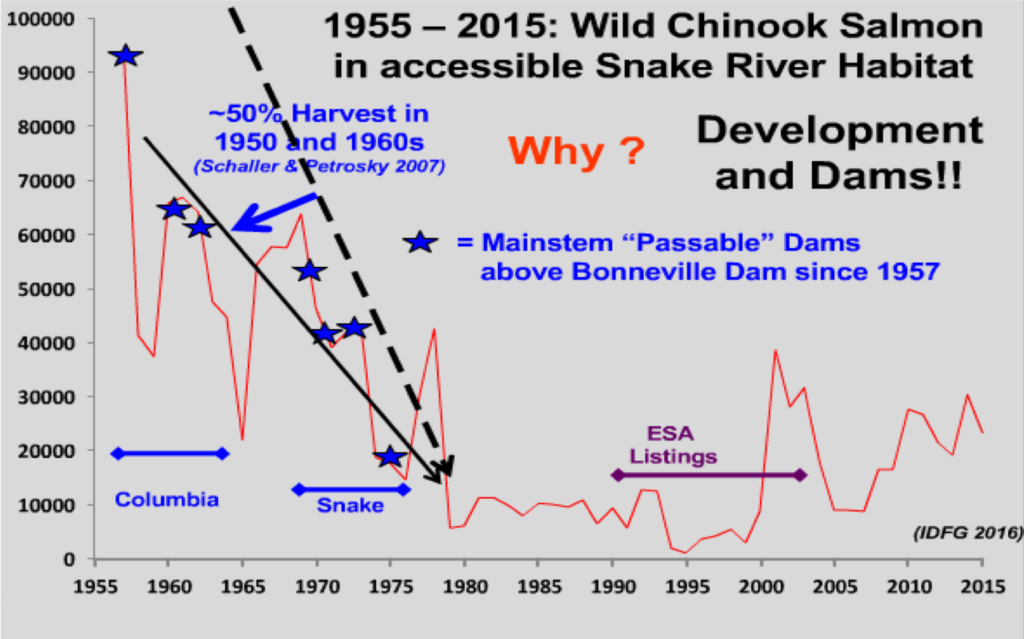
Williams, R.N. and Thurow, R.F. 2017. Born to be Wild: How science can inform recovery of Idaho salmon and steelhead. Webinar recorded by the USDA Forest Service- Rocky Mountain Research Station. Boise. June 2017.
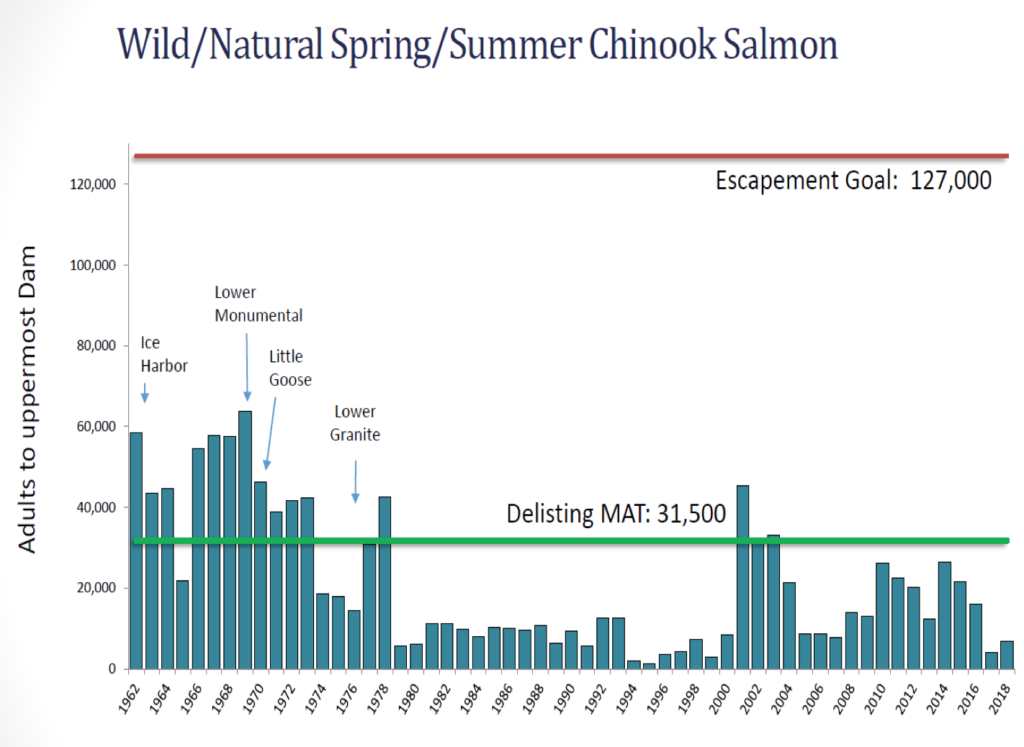
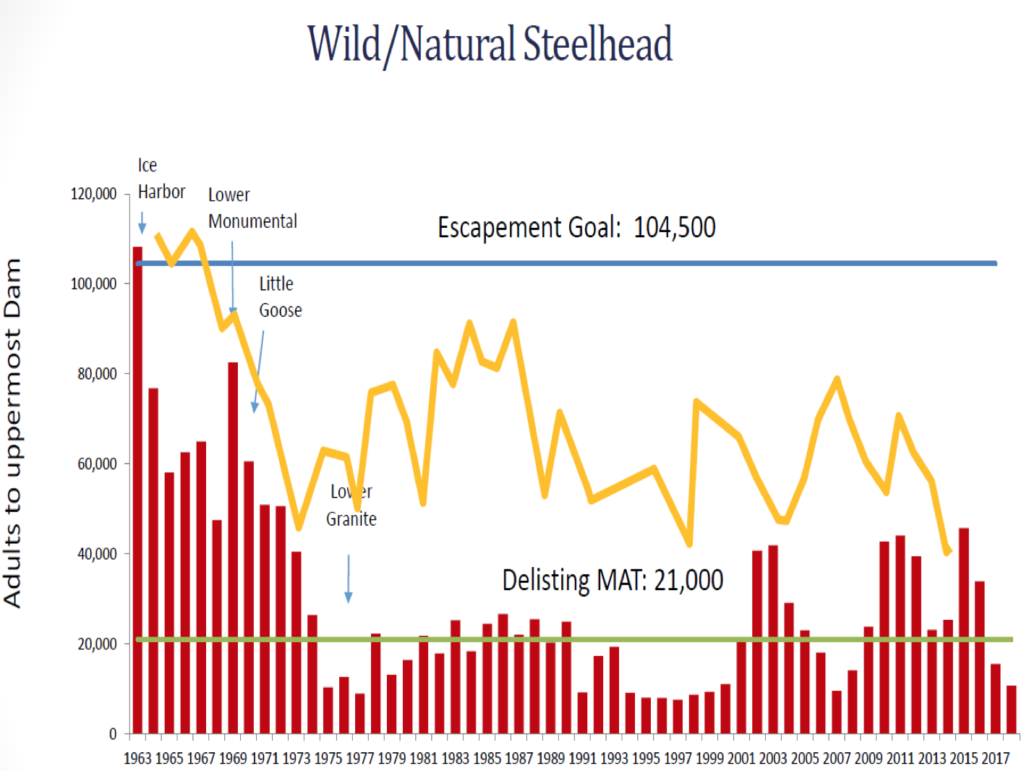
2. MORTALITY IS COMPLEX
Dams do cause mortality. Plain and simple. But understanding why is complex.
Simply measuring how many fish make it over a dam does not give an accurate picture of mortality. And measuring the impacts dams have over time is not an easy science.
In short, the data shows us that mortality rates are directly related to the number of dams a salmon or steelhead must pass. When looking at other populations – fish that experience the same ups and downs of climate change and ocean conditions – we see that salmon and steelhead with fewer dams to cross fare far better than Snake River populations.
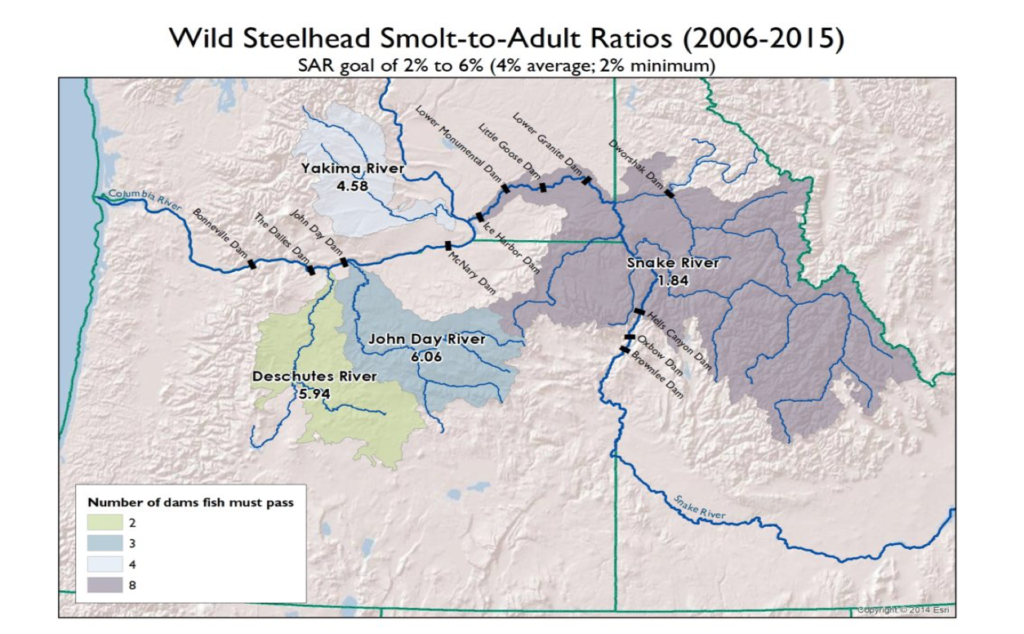
But it is not just the dams themselves. Conditions created by massive reservoirs create issues for fish. Historically, it took about two days for young fish to reach the sea. Today, it takes an average of three weeks and up to six weeks, increasing the exposure to high water temperatures and predators.
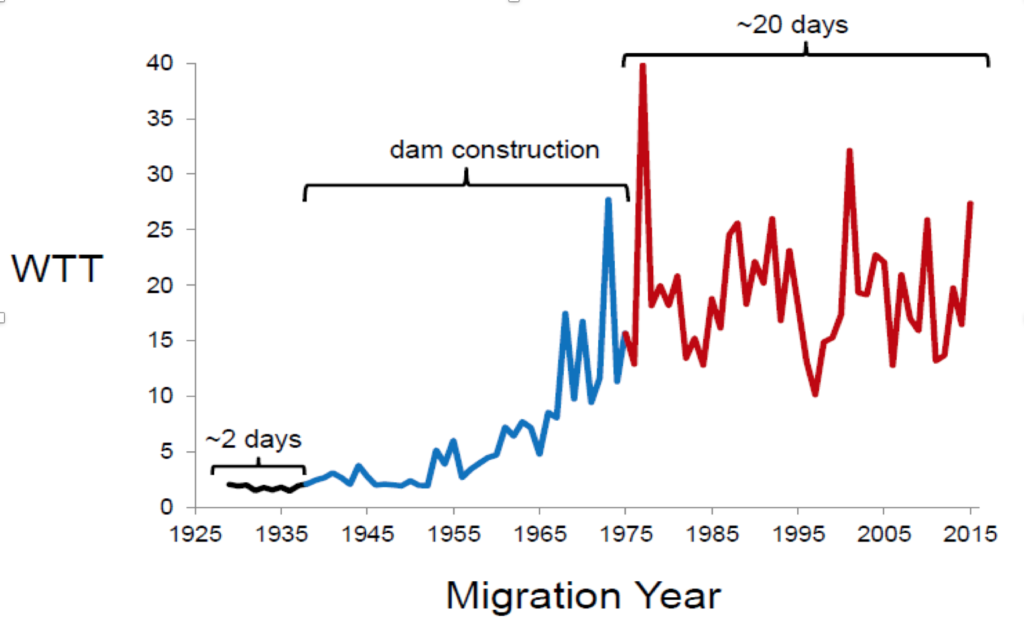
3. HABITAT ISN’T TO BLAME
Habitat is important, and there are definitely more things we can to improve habitat. But habitat is not the primary cause of this drastic decline.
Take the Middle Fork of the Salmon River: This stretch is arguably the finest natal habitat available. Upstream of eight dams, it provides the “if you build it they will come” mecca for salmon and steelhead.
And if unsuitable habitat were the problem, you’d expect populations to be booming in comparison to other, less pristine areas of the Snake River basin.
However, studies show that despite the prime habitat, salmon and steelhead continue to struggle, even in this seemingly perfect location.

This graph shows similar downward trends in total redd counts on Snake River wild salmon populations and Middle Fork of the Salmon River populations.
Williams, R.N. and Thurow, R.F. 2017. Born to be Wild: How science can inform recovery of Idaho salmon and steelhead. Webinar recorded by the USDA Forest Service- Rocky Mountain Research Station. Boise. June 2017.
4. MORE HATCHERY FISH ARE NOT THE SOLUTION
Hatchery fish are not a substitute for wild fish.
Hatchery fish play a role in the system, but they are not the answer to recovering healthy fish populations. The offspring of hatchery fish have poor survival rates when compared to wild fish not to mention that wild fish are just more hearty than hatchery fish raised in a highly controlled environment. Genetically, wild fish are far superior.
Think of your dog. While he may be distantly related to a wolf, he’s probably not equipped to be turned loose in wild with much chance at long term survival.
The same holds true for hatchery fish. While they may prop up depleted populations in the short term, their long-term ability to thrive is problematic.
5. SCIENCE SHOWS DAM REMOVAL IS OUR BEST BET

We support dam removal.
Trout Unlimited recognizes the important role these dams have played. As a science based organization, we also recognize the only way to achieve resilient and fishable populations of salmon and steelhead is to remove the four dams on the Lower Snake. A free flowing river would greatly increase the spawning habitat available to fall Chinook who have been cut off from their historical spawning habitat by the Hells Canyon Complex.
But doing this should come with a portfolio of actions to meet the needs of the stakeholders impacted by dam removal.
In short, we should support bold, creative and inclusive solutions to build a better future for the Pacific Northwest for everyone.
If you want to be more involved in recovering salmon and steelhead on the Lower Snake, please contact shauna.stephenson@tu.org to be added to our list for occasional updates and information on what you can do in your own community.


